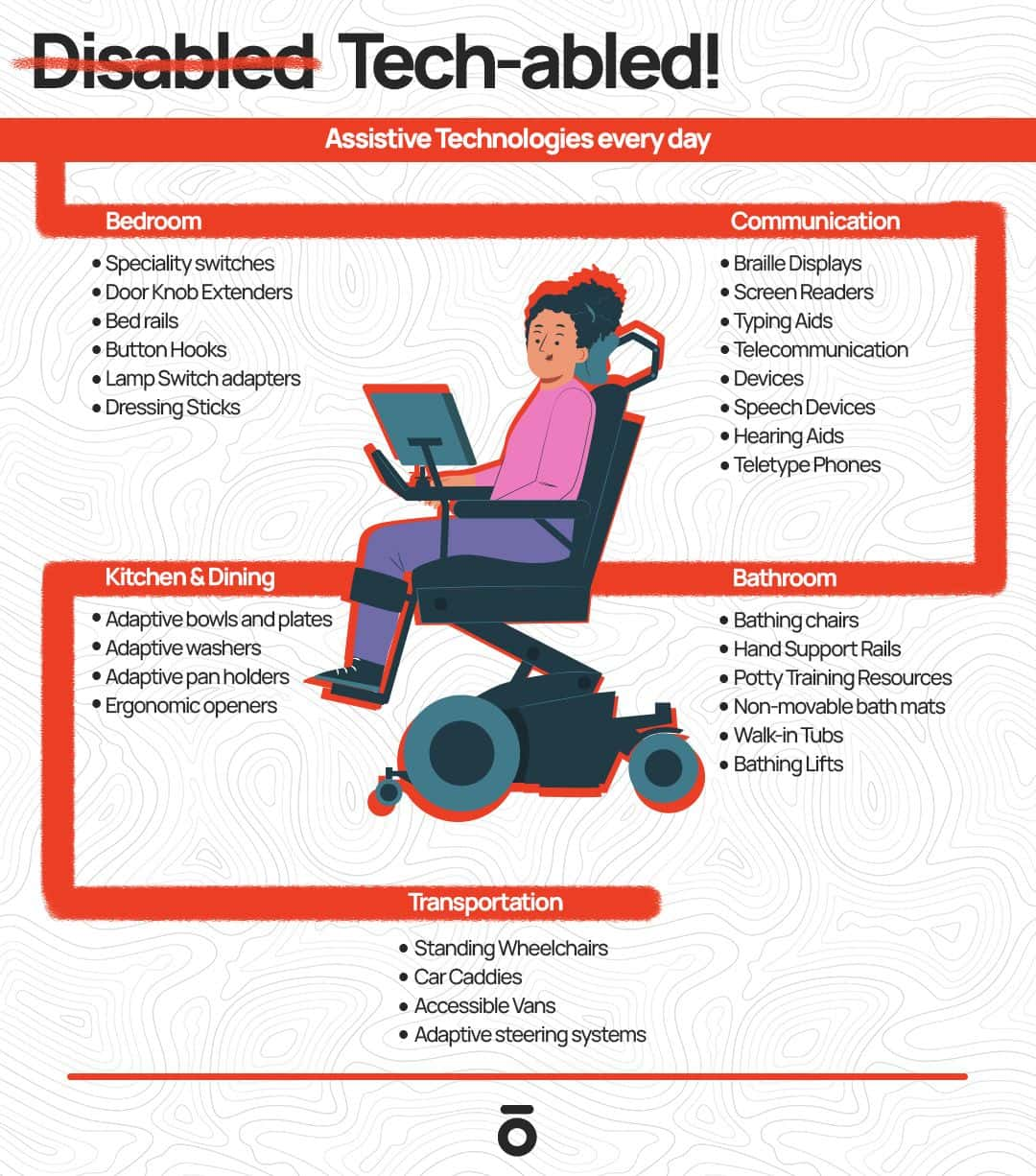How Assistive Technology for Disabled Is Changing Healthcare as We Know It

Introduction
A few decades ago, the journey to the hospital would be grueling if you got a fever. You’ll have to wait in line, and who knows how long it would take for the doctor to just tell you what you already know. And how are you meant to walk to the pharmacy to buy your prescribed medication?
And now? You can call for a doctor to come to your house and buy the medicine through an app, and everything’s sorted without you even stepping out of your room. In recent years, the rapid development of assistive technology for disabled people has been mind-blowing.
You don’t even have to feel so bad when you see someone living with a disability anymore. Are we losing empathy? Perhaps. But it’s a good price to pay for people getting the healthcare they deserve.
This blog explores the ground-breaking innovations and how they reshape healthcare and daily living for disabled people.
Assistive Technology for Disabled People: A Game Changer
So, what is assistive technology? Simply put, it’s any device or system that helps people with disabilities perform tasks that they would generally find difficult or just impossible. These technologies allow disabled people to feel more independent and included.
From mobility aids to communication devices and cognitive support, assistive technologies are becoming increasingly sophisticated and integrated into everyday life.
Healthcare Apps for Disabled Individuals
Almost every adult in tier one and tier two cities in India owns a smartphone, and there are apps that make healthcare more accessible. Whether you want to book an appointment with a doctor, have a consultation, buy medicine, or track your medication and health, there are a plethora of apps to choose from! You can even use Bumble to bond with other disabled people! There’s an app for everything.
Wheelchair Innovations
True story: Our content writer’s maths tuition teacher suffered from polio as a child and moves around all over in an electric wheelchair, which she operates on her own. She even drives from one tuition centre to the other by herself and probably makes more money than you and I. That’s how helpful today’s modern wheelchair is!
Modern electric wheelchairs are even equipped with features like smart wheels, which can adjust their speed and sensitivity based on the terrain, ensuring the user can navigate different surfaces easily.

Advancements in Prosthetics
Prosthetic advancements have revolutionised the lives of people who have lost a limb. Traditional prosthetics have come a long way, but the latest breakthroughs in 3D printed prosthetics and robotic prosthetics make it personalised.
They are taking functionality and comfort to new heights. 3D printing, in particular, allows for highly customised prosthetics that are more affordable and can be produced faster than traditional methods.
In fact, prosthetics have come such a long way that they can be controlled by your brain, effectively working as any normal limb. They might be expensive right now, but with more advancements, who knows?
Smart Home Devices for Disabilities
Smart home devices for disabilities are a growing segment of the assistive technology market. These devices are designed to help lazy people and people with disabilities manage their homes more easily and safely.
Voice-activated assistants allow their users to control lights, the AC, doors, and even the TV hands-free so they can binge Big Boss just like everyone else!
Innovative Mobility Aids
In addition to wheelchairs, other innovative mobility aids help disabled people. Exoskeletons, for example, are wearable robotic devices that help people with spinal cord injuries or paralysis in walking again.
Companies like Bangalore-based Bionic Yantra are developing wearable exoskeletons that help people with mobility issues stand and walk with the help of external mechanical devices.
Smart canes are another breakthrough in mobility aids. Equipped with sensors, detect obstacles and navigate their environment more effectively.
Visual Impairment Aids
For people with visual impairments, innovations like visual impairment aids are making a massive difference. Electronic glasses use high-definition cameras to capture the surroundings and transmit the images to the wearer’s eyes through a pair of glasses, which pretty much restores their vision.
Text-to-speech technology, which can read printed text aloud, and braille displays, which allow visually impaired people to read digital text, have also been game changers. Smartphone apps like Be My Eyes connect visually impaired users with sighted volunteers for assistance, allowing them to navigate unfamiliar places or read labels on products.
Robotics for Disability Assistance
This might sound a bit apocalyptic, but robots are being designed to perform tasks like helping people with mobility challenges get in and out of bed, fetch objects, or even assist with personal care tasks.

Virtual Reality Therapy for The Disabled
This is already accessible to people around the world. Not only can patients call and speak to their physical therapists, but with the help of VR, they can have an immersive environment around them.
They can learn to walk or do other exercises that will improve their motor skills.
Wundrsight, a Bangalore-based startup (yet again), does exactly this! They provide therapy to patients in a much safer place instead of being affected by the hustle and bustle of the real world.
Conclusion
We are truly blessed to live in a time where healthcare is as accessible as it is, and the future of disability healthcare solutions looks incredibly promising. These innovations are reducing the barriers for disabled people to get the help that they need and deserve so they can lead normal lives, too!
As research and development continue, we are sure that we will see even more exciting advancements in disability-friendly gadgets, healthcare apps, and therapy that cater specifically to the unique needs of disabled people.






